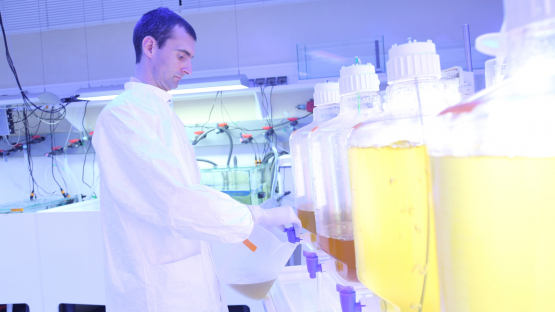Pollutants may seem to disappear into the ocean to never be seen again, but for many contaminants, it is only the beginning of their oceanic journey up the food chain to people’s dinner plates. To tackle this problem, scientists at the IAEA’s laboratories are studying how these contaminants are taken up by different marine organisms, how they make their way through the marine environment and how they are processed by the human digestive system. Their research findings will help scientists worldwide assess the risks of eating contaminated seafood, and help government officials establish and maintain seafood safety regulations.
“Many people treat the ocean like a sink, considering it a final resting place for pollutants, but some of these pollutants can find their way into our seafood,” said Marc Metian, a research scientist at the IAEA’s Environment Laboratories. “Using nuclear techniques we can examine how contaminants move through the food chain from marine algae all the way to predator fish, and we can also assess the impact it can have on people who are eating these fish.”
Since the industrial revolution, ocean pollution has increased steadily. Around 80% of pollution comes from land, including agriculture, heavy industry, untreated sewage and litter like plastics. These pollutants can jeopardize seafood safety, which can affect the lives and livelihoods of more than three billion people who depend on the ocean as a source of income and food, according to the United Nations.
Tracking pollutants through the food chain using radiotracers
Scientists at the IAEA develop and use techniques using radiotracers to better understand how contaminants move through the marine food chain. Radiotracers are chemical elements, either natural or artificial, that have a unique signature, almost like a fingerprint. They can be used to study natural processes like the flow of water, bone growth rate as well as trace the movement of different substances. They can also be used to track contaminants in the marine environment, such as metals like mercury or cadmium; radionuclides, such as caesium and americium; and organic pollutants, such as polychlorinated biphenyls (PCBs) and pesticides.
The scientists have also developed a way to replicate the human digestive process in the laboratory by creating a mix of enzymes. This allows them to observe which contaminants are broken down during digestion and which remain in the system.
Tracking the flow of contaminants is particularly important for keeping people safe, Metian explained, as the contaminant concentration levels can increase the higher up they get in the food chain, potentially putting people at risk. This amplification process is known as biomagnification. This is a process where contaminants enter the environment and are absorbed or eaten up by small organisms, which in turn are eaten by larger organisms. These contaminants then accumulate in the organisms and their concentration increases. Animals like tuna, whales, and even humans face a greater risk of toxins and contaminants building up and posing a health threat.
Many people treat the ocean like a sink, considering it a final resting place for pollutants, but some of these pollutants can find their way into our seafood.






